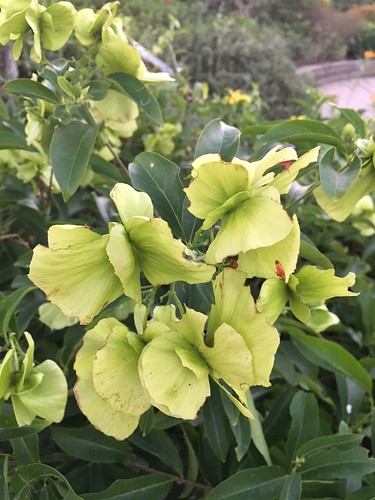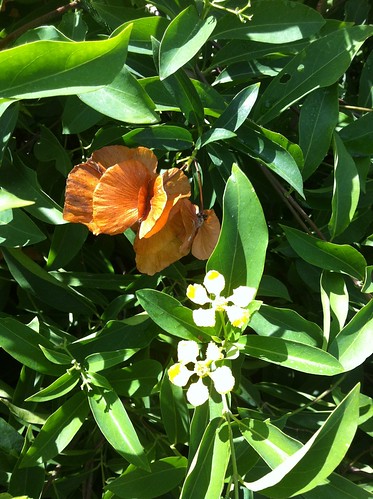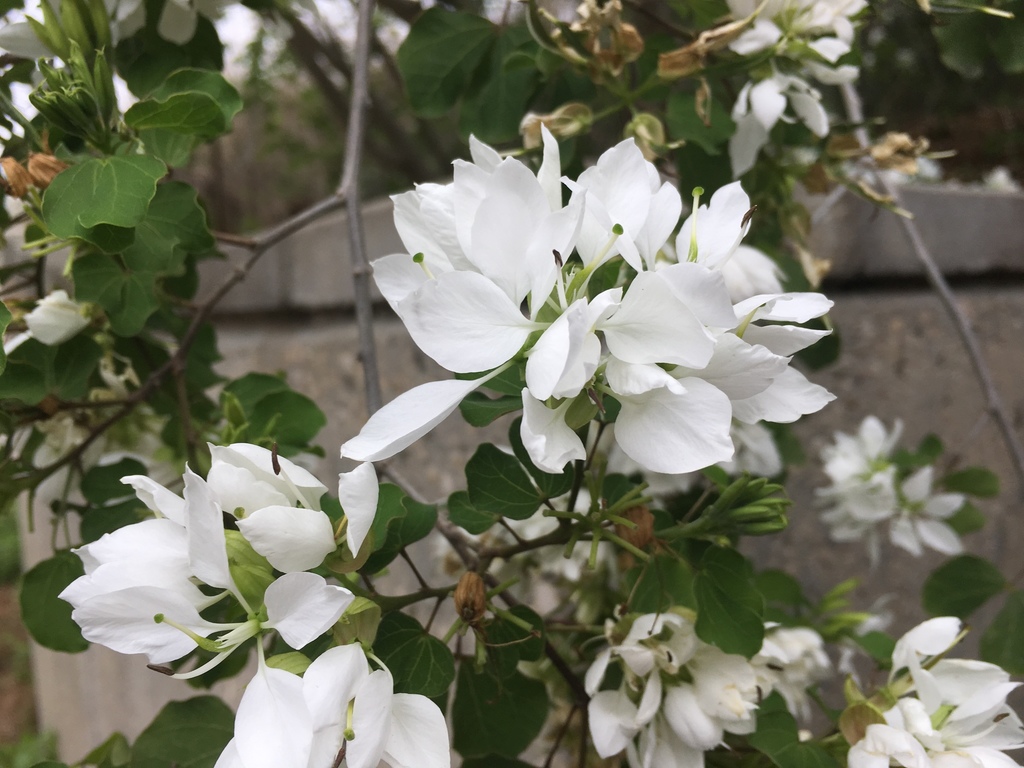I have long-since admired a particular plant growing in the Butterfly Garden on the bay side of Moody Gardens in Galveston. I'm actually amazed that I've never blogged about it before. This plant is a creeping and mounding vine, and I suppose it would climb if it had something to climb. In the summer it produces many small yellow flowers in clusters.
After those flowers are pollinated the seed pods form and things start getting interesting. The seed pods begin green and sort of blend in with the foliage, but they have a very interesting shape. Like many other seeds they have wings that help them disperse in the wind. It just so happens that these wings make them look a lot like butterflies. As the season progresses the seed pods dry out and become a more conspicuous brown. I collected some of these seed pods a few years ago and my mother-in-law was using them as decorations.
This summer I decided to dissect a few of these to get to the seeds. The seeds are smaller than I was expecting. I planted them in some moist soil and let time do its thing. Just a few of these germinated for me, not surprising considering the amount of time since they had been harvested. I planted one of these along the fence line at the house in Galveston and I'm hoping it will do well there without any special care. I have kept the other one at home, in a community pot with other seedlings I started this summer. It is slow growing so far. Perhaps I need to provide more sunlight.
I found a story from Birds & Blooms magazine about a woman who painted the seed pods as real butterflies. Pretty neat.
After those flowers are pollinated the seed pods form and things start getting interesting. The seed pods begin green and sort of blend in with the foliage, but they have a very interesting shape. Like many other seeds they have wings that help them disperse in the wind. It just so happens that these wings make them look a lot like butterflies. As the season progresses the seed pods dry out and become a more conspicuous brown. I collected some of these seed pods a few years ago and my mother-in-law was using them as decorations.
This summer I decided to dissect a few of these to get to the seeds. The seeds are smaller than I was expecting. I planted them in some moist soil and let time do its thing. Just a few of these germinated for me, not surprising considering the amount of time since they had been harvested. I planted one of these along the fence line at the house in Galveston and I'm hoping it will do well there without any special care. I have kept the other one at home, in a community pot with other seedlings I started this summer. It is slow growing so far. Perhaps I need to provide more sunlight.
 |
Butterfly Vine (Mascagnia macroptera) seedling,
growing in a community pot with Cockspur Coral Tree (Erythrina crista-galli) seedlings.
|
I found a story from Birds & Blooms magazine about a woman who painted the seed pods as real butterflies. Pretty neat.





















